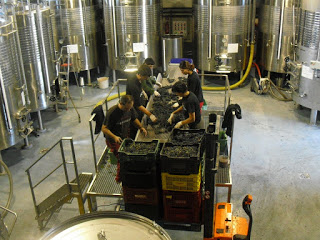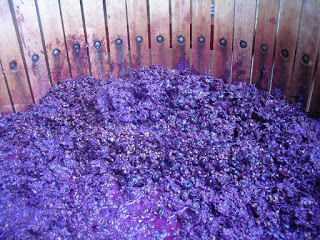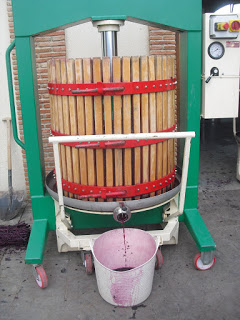Recently I have been to the Ronda area quite a few times with clients, visiting some of the great boutique wineries there. It’s harvest time at the moment and so it’s a great time for visits. Seeing everything happening makes it much easier to explain the wine making process. The grape varieties grown in the area include: Tempranillo, Cabernet Sauvignon, Merlot, Syrah, Petit Verdot and Pinot Noir. In the wineries that I visit the Tempranillo, Merlot, Syrah and Pinot Noir have been picked and are going through cold maceration, alcoholic fermentation, post maceration or malolactic fermentation. Alcohol levels will be quite high this year due to August being hotter than normal.
In the photo below Syrah grapes are passing along a selection table where unripe, squashed and dried out grapes are removed along with any leaves. The grapes then pass through a de-stemming machine before being pumped into pre-cooled fermentation vats where they will be kept in cold maceration before allowing the temperature to rise, when selected yeasts will be added and fermentation starts.

When fermentation finishes, along with any period of post-maceration, the wine is drained off and stored in a separate tank. The remaining skins are then gently pressed to obtain press wine. If the pressure applied is too high, bitter tannins from the pips will also be extracted, something that nobody wants. Below are some photos of the grape skins and the pressing process.


To finish, I have included a photo of a wine tasting at one of the Ronda wineries taken three days ago with a fantastic group of people from Canada. I did a great tapas tour with the same group last Saturday. In one of the bars, a temple to the best acorn-fed Iberian ham, one of the group, Jennifer, ended up cutting ham for us and doing it very well! But, as they say, that is another story.

